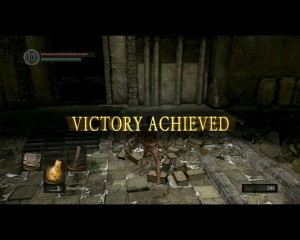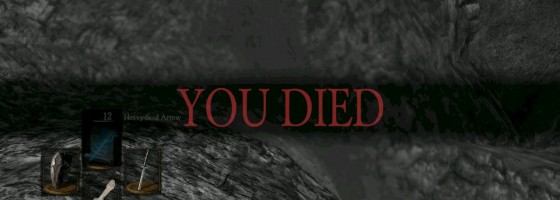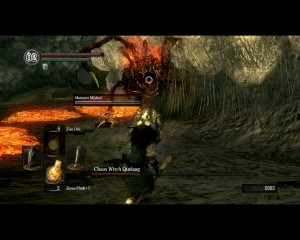One of the basic fundamental conditions of a game is that there must be win and lose conditions. Failure is something that we all strive to avoid yet it is a necessary part of both game design and life.
However, different game designs have different types of failure that can affect just how frustrating it is and the chance that people will keep playing.
The Degrees of Failure:
For this post, we’re not going to get too specific into negative feedback and instead condense things into two categories of failure.
Controllable failure is where the player had a role in their own demise: They missed a jump, dodged the wrong way or used the wrong weapon as examples.
Uncontrollable failure is where the design of the game and mechanics were the factors in the player’s lost — A dice roll for attacks, camera got stuck on a wall and the player couldn’t see the enemy coming; enemies were designed with major advantages and so on.
Let’s start with controllable failure as it is more common. Games built around controllable failure are normally action based games or those with high player skill level requirements. In these titles, the player is normally the instrument of their own success… or failure at the game.
For example, in Super Meat Boy every element of the game was set up with a specific purpose and design. From where platforms were placed to the space between spinning blades, all designed to challenge the player in figuring out the obstacle course design.
There was nothing hidden about Super Meat Boy and dying in the game was always the player’s fault. Because the act of failure is tied to the player’s skill, it makes the difficulty of the game subjective based on the player and more rewarding when the player wins.
The problem with games where the player’s skill is the only factor for winning is that they limit accessibility. If someone reaches a point where they know what to do, but they don’t have enough expertise to do it, then the game is done for them and they will stop playing on a sour note.
Uncontrollable failure can be considered both technical issues with the game, or game design strongly against the player.
With technical issues we talked about camera issues but we can also include abilities not working and even the simple act of the game crashing at a specific point.
Design is where things get tricky as the situation can be subjective based on player skill. Normally the best way to spot uncontrollable failure is if the difficulty curve of the game suddenly spikes at a specific area.
Two good examples: first is the infamous “sniper town” level from the original Medal of Honor. Here, the player had to pick out snipers in a low detailed village who were set up to spot the player first and get free shots, which the player could only survive a few hits.
The other was from Ghostbusters: The Video Game. Near the end of the game, the player had to fight a horde of flying gargoyles who attacked by dive bombing the player. In order to target the enemy, the player had to lock the camera on them while they were flying high up.
However, while they were trying to hit the enemy, the camera was so focused that the player couldn’t see the other enemies, much less know when to dodge their attacks.
Most cases of uncontrollable failure are seen in RPGs or games with heavily abstracted systems. It’s not the player’s fault if their party keeps missing when they attack, or the enemy scores a critical hit for example.
It stand to reason that games built around rogue-like design make heavy use of uncontrollable failure as the games feature randomized elements. However, that doesn’t mean that the player’s involvement won’t have an impact.
Good game design is about giving the player a way to even the odds or make the best of a bad situation, or giving them some control over the uncontrollable.
Now, we’ve talked about games with separate types of failure, but there are examples of games built around both types of failure.
Who’s The Guy?
Combining controllable and uncontrollable failure can lead to some of the tensest games around, requiring a player who can adapt to a variety of challenges.
An example would be Demon’s and Dark Souls as both titles rely on challenging the player to improve their skill, while dealing with (at the time) unpredictable challenges.
Both games feature situations meant to trap the player the first time they attempt it and bosses whom you have to learn their patterns to stand a chance against them.
As we talked about, a part of good game design is allowing the player to use their knowledge and skill to even the odds of uncontrollable design.
With the Souls games, there is a good chance that on your few runs through a new area that you’re going to die, either to a hidden threat or dealing with a tough fight.
But, once you are armed with the knowledge to supplement your skills, you should be able to conquer the sections that gave you trouble.
Another example of a game where both types of failure was present was the indie title: I Wanna Be The Guy. The game is full of difficult platforming requiring expert skill. And a load of traps and pitfalls that will kill you on your first time simply by the fact that you didn’t know they existed. Once you knew where the traps were, you then needed the skills to get around them safely.
Now the other aspect of understanding failure is how to overcome it which takes us to the last section for this piece.
The Force of Feedback:
Feedback is an important learning tool that we can see beyond just playing video games. It can be as blatant as not touching a hot boiler plate to something innocuous like social graces. Without feedback, it becomes very hard to improve and is a critical element of failure.
In video games there is a wide scale of feedback available to the player and designer and understanding what is required based on the game is important. Someone playing Super Mario Galaxy doesn’t need a number breakdown of Mario’s velocity and jump height.
While someone playing Dark Souls would need to know what their max weight limit is and a list of all their resistances down to the decimal point. The amount of feedback needed is determined by the main type of failure present in a game: controllable or uncontrollable.
In games built around controllable failure, feedback can be pretty simple. If the player messes up, they can see where and make improvements for next time. In Super Meat Boy, after beating a level the player can watch all the runs they did simultaneously and see how they improved through play.
The reason is that feedback directly corresponds to the player’s actions. If a player dies because they fell into a pit in a Mario game, they know immediately for next time to alter their jump.

Beating any of the bosses in a game like Dark Souls is a major achievement thanks to the effort needed by the player.
With uncontrollable failure, the more abstract the game system, the more important informative feedback is to the player.
If an enemy just one hit killed your entire party, the player should have a good idea as to why that happened.
The worse thing to do to a player and the most frustrating is to give the player no feedback on what to do. Without feedback, someone can’t learn from their mistakes and will become frustrated.
In Shin Megami Tensei 4 due to lower health values and stronger attacks, it is possible for enemy groups who get the first strike to wipe you out before it is even your turn. In these cases the player has no idea how to counter that (if there is even a counter) and can be viewed as cheap way to die.
Another example is from the indie game: Kerbal Space Program which I’m trying to get around to spotlighting. The game makes use of realistic physics to simulate running a space program, requiring the player to understand everything from rocket design, to how velocity works in space.
As it stands, the only way someone can learn from feedback, is to already understand the game. While someone completely new would have no starting point for how to learn the mechanics of the game and improve. The tutorials at present are too linear for the sandbox gameplay and will hopefully be altered when the game is eventually released.
The worse feeling possible is when the player fails and has no idea what they did wrong or how to improve. We can see this in multiplayer FPS titles where someone new will get killed from enemies sniping or out of their field of view and have no idea what happened.
The challenge is that in many cases, uncontrollable failure can be controlled if the player had a deeper insight into how the game worked. But it is tough to know just how much feedback to give the player as you still want them to learn the game on their own.
The balance between both kinds of failure and how much feedback to give the player is yet another facet of the challenges of game design and there is no perfect answer. But you’ll know if you have something special if the player after failing still wants more.





Pingback: The Danger of Forced Failure in Game Design | Game Wisdom()